As we enter 2025, landscape design is all about sustainability, durability, and harmony with nature. For homeowners in coastal areas like Warrenton, Oregon, this means choosing features that not only enhance outdoor beauty but also stand up to the region’s unique climate challenges.
No matter if you want to upgrade your backyard, design an easy-to-care-for garden, or create an outdoor space that can handle any weather, these landscaping design trends will help you build a beautiful and long-lasting outdoor area.
1. Using Native Plants for a Healthier, Low-Maintenance Landscape
One of the biggest landscape design trends for 2025 is the use of native plants. These plants naturally grow in the region and are adapted to local climate conditions, making them easier to maintain and better for the environment.
Why Choose Native Plants for Your Warrenton Landscape?
Native plants are an excellent choice for homeowners and gardeners looking for a beautiful, low-maintenance, and eco-friendly landscape. Because they have adapted to the local environment over time, they offer a range of benefits that non-native plants simply can’t match.
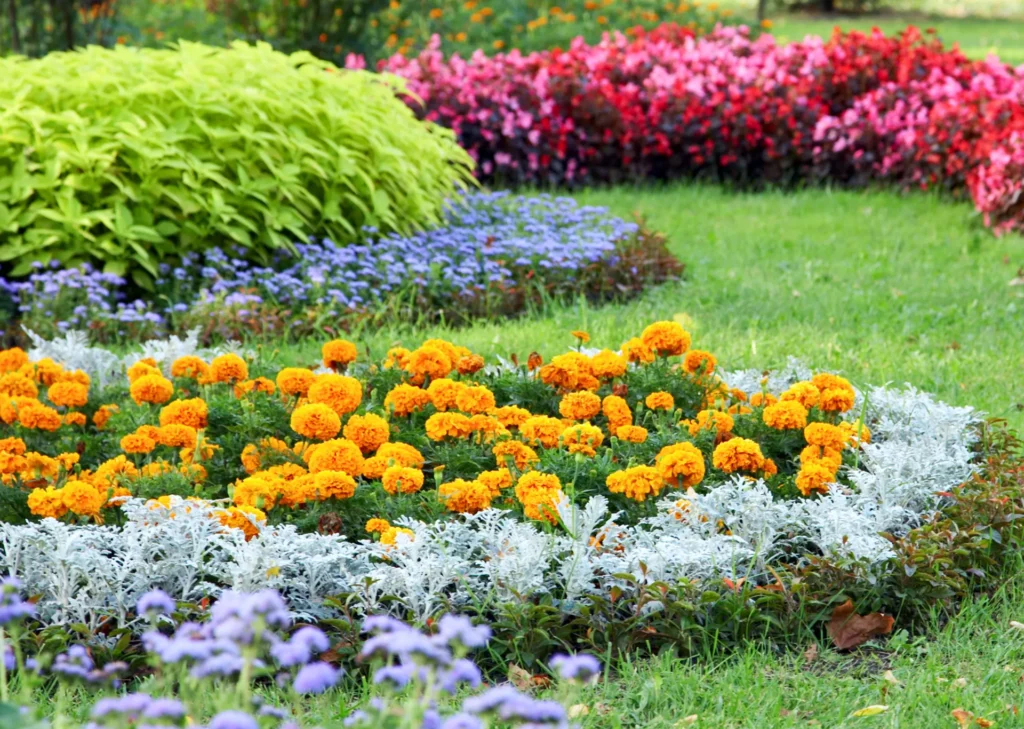
Here’s why choosing native plants can make all the difference in your garden or yard:
Less Watering and Maintenance
One of the biggest advantages of native plants is their ability to thrive with minimal care. Because they are naturally suited to Warrenton’s climate, soil, and rainfall patterns, they require far less irrigation than exotic species. This not only saves you time but also reduces water usage, making your garden more sustainable and cost-effective.
Plus, since they have evolved to grow in the local soil, they don’t need as much fertilization or soil amendments, cutting down on both labor and expenses.
Naturally Pest-Resistant
Unlike non-native plants that may struggle against local pests, native plants have developed natural defenses over time. Their built-in resistance means they are less likely to be damaged by insects and diseases, reducing the need for chemical pesticides. This creates a healthier, more balanced ecosystem in your yard and keeps your garden looking great with minimal intervention.
Supports Local Wildlife
Choosing native plants isn’t just good for your garden, it’s great for the environment, too! Native flowers, shrubs, and trees provide essential food, shelter, and nesting spaces for local wildlife, including birds, bees, butterflies, and other pollinators.
Planting native species helps support Warrenton’s biodiversity, creating a thriving ecosystem that benefits local wildlife and enhances your outdoor space.
Stronger in Coastal Conditions
Living in a coastal area comes with unique challenges, including strong winds, sandy or salty soil, and high humidity. Many non-native plants struggle in these conditions, but native plants have evolved to withstand them. Whether it’s the salty air blowing in from the ocean or the occasional coastal storm, native plants are naturally hardy and resilient, ensuring that your landscape stays lush and beautiful year-round.
Adding native plants to your garden is a simple way to create a low-maintenance and eco-friendly outdoor space. Since they naturally thrive in Warrenton’s climate, they need less water and care, saving you time and effort. Plus, they help local wildlife by providing food and shelter for birds, bees, and butterflies. If you want a beautiful, easy-to-care-for yard that’s good for the environment, native plants are the perfect choice!
2. Weather-Resistant Hardscaping for Durability and Style
Coastal climates present unique challenges such as strong winds, heavy rains, and salty air. Hardscaping which includes patios, walkways, retaining walls, and outdoor seating areas—must be made from materials that can withstand these conditions while still looking stylish.
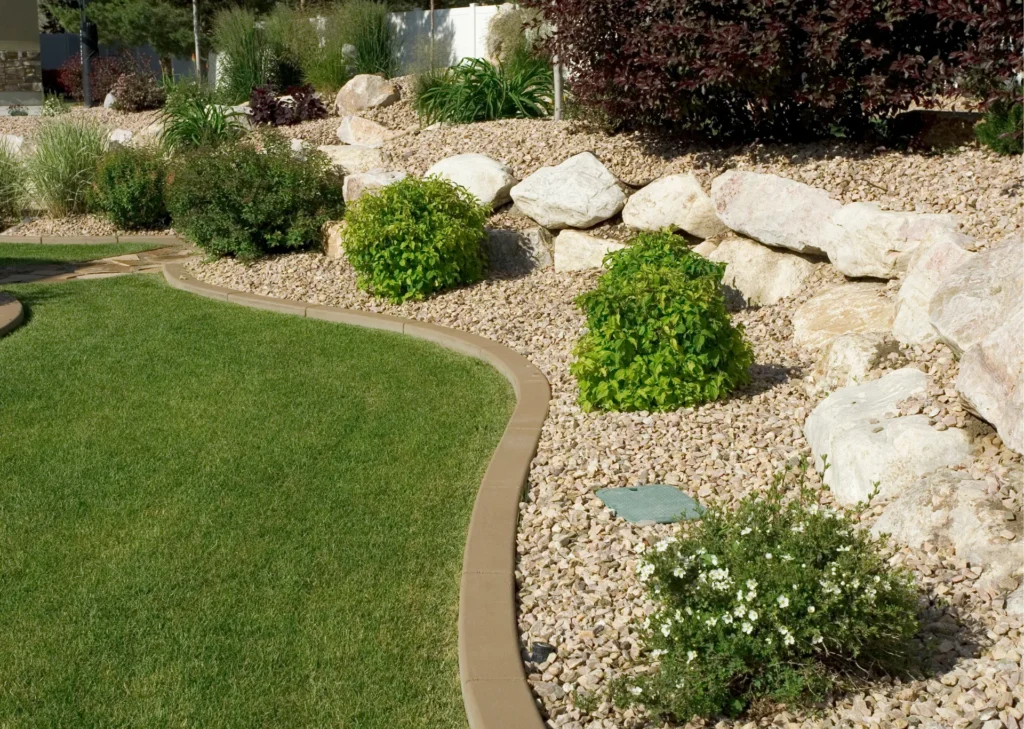
Key Features of Weather-Resistant Hardscaping:
Hardscaping in coastal environments requires durable materials and smart design to withstand the challenges of wind, salt, moisture, and erosion. By selecting the right materials and incorporating protective features, you can create an outdoor space that remains functional and beautiful for years to come.
1. Durable Materials for Coastal Conditions
The materials used in hardscaping must be able to endure constant exposure to moisture, salty air, and fluctuating temperatures. Some of the best choices include:
- Natural Stone (Basalt or Granite): These dense stones are highly resistant to erosion and can handle heavy foot traffic without wearing down. They also provide a timeless and elegant look.
- Concrete Pavers: Unlike solid concrete slabs, pavers allow for slight movement and water drainage, reducing the risk of cracking and pooling water. Permeable pavers also help prevent flooding by allowing rainwater to seep into the ground.
- Treated Wood or Composite Decking: Traditional wood can deteriorate quickly in wet environments, but treated wood or composite materials offer moisture resistance, preventing rot, warping, and mold growth.
2. Erosion Control Features for Coastal Stability
Coastal areas often have loose or sandy soil that can easily shift due to rain and wind. Proper erosion control measures help maintain the integrity of your landscape.
- Retaining Walls: Stone, concrete, or brick retaining walls help hold back soil and prevent landslides on sloped properties.
- Stone Borders: Placing stone borders around garden beds and pathways minimizes soil displacement and enhances durability.
- Permeable Paving: Hardscape surfaces designed with small gaps between pavers or gravel bases allow rainwater to absorb naturally into the ground, preventing excessive runoff and erosion.
3. Wind-Resistant Design for Year-Round Comfort
Strong coastal winds can make outdoor spaces feel uncomfortable and even cause structural damage over time. Incorporating wind-resistant elements can improve both comfort and durability.
- Windbreaks: Strategically placed stone walls, sturdy fencing, or thick hedges help block and redirect wind, making your outdoor space more enjoyable.
- Sturdy Outdoor Structures: Pergolas, gazebos, and trellises should be built with reinforced materials to withstand strong gusts. Secure them properly to prevent shifting or damage.
4. Low-maintenance outdoor Living Spaces
Creating an outdoor space that is both beautiful and easy to maintain allows you to enjoy your landscape without constant upkeep.
- Weather-Resistant Furniture: Choose rust-proof aluminum, teak, or all-weather wicker for furniture that can endure coastal conditions.
- Fire Pits and Outdoor Heating: Extend the usability of your outdoor space with a fire pit, outdoor fireplace, or infrared heaters, allowing you to enjoy your patio year-round.
- Drought-Resistant Landscaping: Coastal gardens thrive with hardy, salt-tolerant plants such as succulents, ornamental grasses, and native shrubs, reducing the need for constant watering and upkeep.
3. Sustainable Landscaping to Protect the Environment
As environmental awareness grows, more homeowners are choosing eco-friendly landscaping practices that conserve resources and reduce waste. Sustainable landscaping is not only better for the planet but also lowers water bills and maintenance costs.
Top Sustainable Landscaping Trends for 2025:
1. Rain Gardens: Natural Flood Prevention and Water Filtration
If your yard tends to collect water after heavy rainfall, a rain garden could be the perfect solution. Rain gardens are specially designed to capture and filter rainwater, reducing runoff and preventing flooding in low-lying areas.
How They Work:
- These gardens are placed in areas where rainwater naturally collects, such as at the bottom of a slope or near downspouts.
- They are filled with deep-rooted native plants, which help absorb excess water while filtering out pollutants.
- As water slowly soaks into the ground, it replenishes the soil instead of running off into storm drains, reducing the risk of erosion and water pollution.
Why You’ll Love It:
- Helps prevent standing water and flooding.
- Supports local wildlife by attracting pollinators like butterflies and bees.
- Requires minimal maintenance once established.
2. Permeable Paving: A Smarter Alternative to Concrete
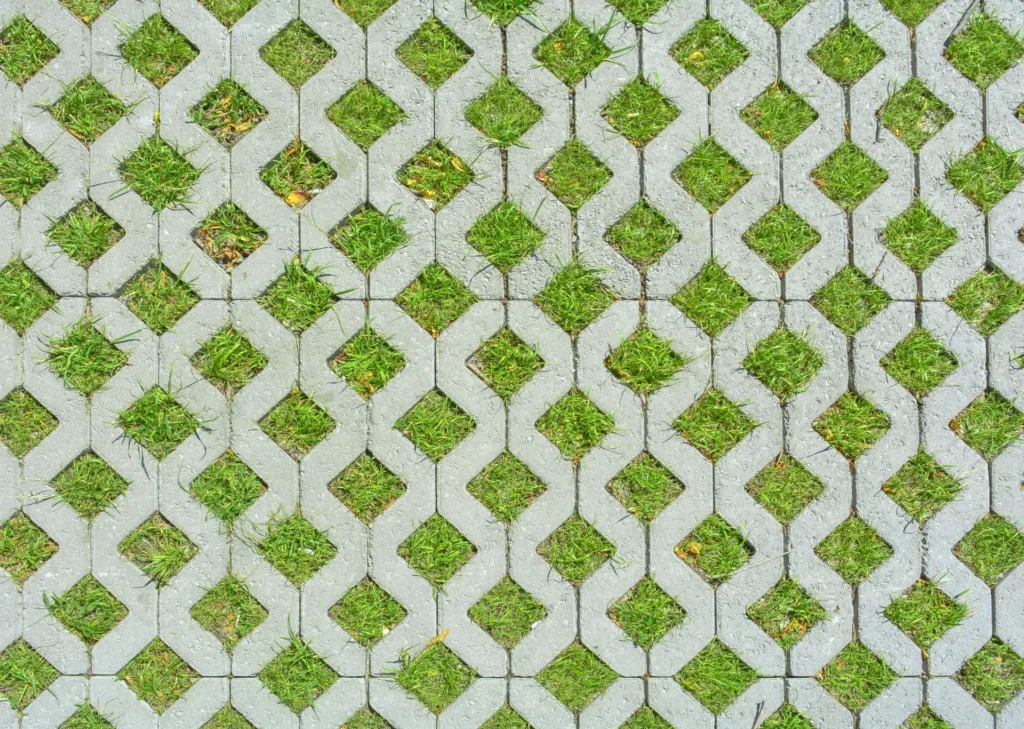
Traditional driveways and walkways made of solid concrete or asphalt can lead to water pooling and erosion. Permeable paving offers a practical and attractive alternative, allowing water to drain naturally into the soil below.
Best Permeable Paving Options:
- Gravel Driveways & Walkways: A simple and cost-effective choice that allows rainwater to seep into the ground.
- Permeable Concrete & Asphalt: Specially designed with small gaps that let water filter through.
- Interlocking Pavers: Spaced apart with gravel or grass between them, these pavers create a beautiful and eco-friendly pathway.
Why You’ll Love It:
- Reduces puddles and muddy areas in your yard.
- Minimizes soil erosion and helps recharge groundwater.
- Adds a stylish touch to your driveway or walkway while being environmentally responsible.
3. Drought-Resistant Landscaping (Xeriscaping): Lush Beauty with Less Water
Keeping your yard green and vibrant doesn’t have to mean using tons of water. Xeriscaping is a landscaping approach that uses drought-resistant plants, mulch, and efficient irrigation to create a water-wise outdoor space that still looks stunning.
How to Design a Xeriscape Garden:
- Choose low-water plants like succulents, lavender, and ornamental grasses that thrive in dry conditions.
- Use mulch to retain moisture, reduce evaporation, and prevent weeds.
- Install drip irrigation systems that deliver water directly to plant roots, reducing waste.
Why You’ll Love It:
- Lowers your water bill by cutting down on irrigation.
- Requires less maintenance since drought-resistant plants are hardy and self-sufficient.
- Creates a visually appealing landscape that stays green even during dry seasons.
4. Edible Landscaping: Grow Your Fresh Produce
Why settle for a purely decorative yard when you can have one that provides fresh, homegrown food? Edible landscaping blends fruit trees, herbs, and vegetable gardens with ornamental plants, allowing you to enjoy both beauty and functionality in your outdoor space.
How to Incorporate Edible Plants into Your Landscape:
- Plant Fruit Trees: Apple, pear, citrus, and fig trees can provide shade and delicious produce.
- Grow Herbs Along Pathways: Rosemary, basil, and mint make great additions to flower beds while offering fresh flavors for cooking.
- Use Vegetables as Decorative Features: Kale, Swiss chard, and lettuce add vibrant color while producing nutritious greens for your meals.
Why You’ll Love It:
- Saves money on groceries by supplying homegrown fruits and vegetables.
- Encourages a sustainable and self-sufficient lifestyle.
- Adds a fresh and organic touch to your meals with just-picked ingredients.
By implementing these sustainable strategies, homeowners can create environmentally responsible landscapes that require less water and upkeep.
4. Outdoor Living Spaces Designed for Year-Round Use
With more people spending time at home, outdoor living spaces are becoming an extension of indoor areas. In 2025, the trend is to design comfortable and functional outdoor spaces that can be enjoyed throughout the year.
1. Covered Patios & Pergolas
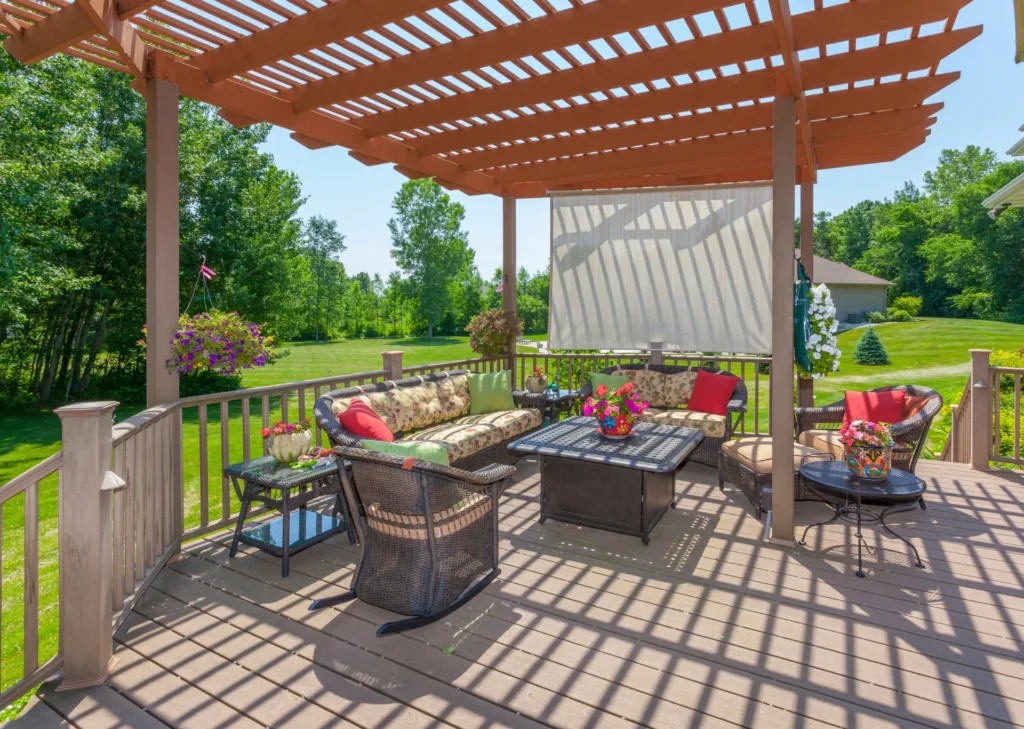
A well-designed outdoor living space should offer shelter from the elements so you can enjoy the outdoors in any season. Covered patios and pergolas provide much-needed shade in the summer, protecting you from harsh sun rays, while also offering shelter from rain during the winter.
Key Benefits:
- Keeps outdoor furniture and décor protected from weather damage.
- Creates a comfortable retreat for relaxing, dining, or entertaining.
- Can be enhanced with retractable screens, curtains, or climbing plants for extra privacy and shade.
For a more permanent and stylish touch, consider a pergola with a slatted or louvered roof that can be adjusted for the perfect amount of sun or shade.
2. Outdoor Kitchens & Fire Pits
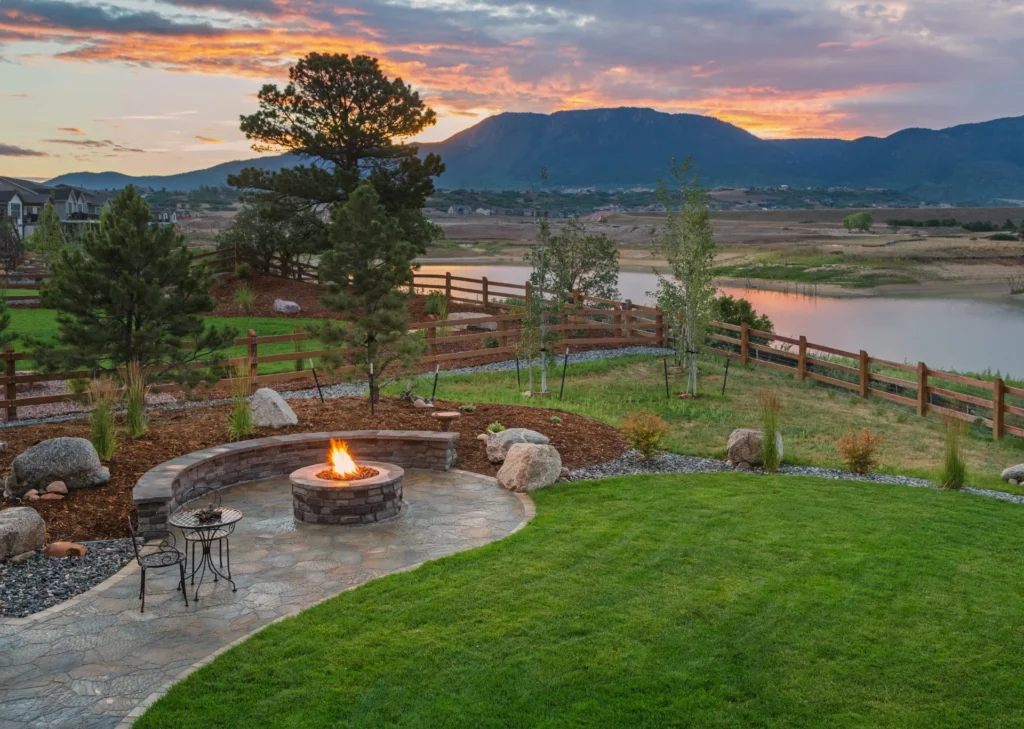
Transforming your backyard into a fully functional outdoor living space isn’t complete without an outdoor kitchen or fire feature. These additions allow you to entertain guests, prepare meals, and stay warm even on cooler days.
Outdoor Kitchen Must-Haves:
- A built-in grill or pizza oven for cooking up delicious meals.
- Counter space for prepping food and serving guests.
- A mini-fridge, sink, and storage for ultimate convenience.
Why You Need a Fire Pit:
- Provides warmth, making outdoor spaces usable during chilly evenings.
- Creates a cozy gathering spot for roasting marshmallows and socializing.
- Enhances the ambiance, giving your backyard a relaxing, inviting feel.
Fire pits come in various styles, from rustic wood-burning models to sleek, modern gas fire pits that turn on with the flick of a switch.
3. Cozy Seating Areas
No outdoor space is complete without a cozy seating area where you can unwind and enjoy the fresh air. Choosing the right furniture and accessories can make your patio or deck feel just as comfortable as your indoor living room.
How to Create the Perfect Outdoor Lounge:
- Opt for weather-resistant furniture made of teak, aluminum, or wicker to withstand the elements.
- Add plush cushions and outdoor rugs for extra comfort and warmth.
- Keep throw blankets handy for chilly nights, making the space inviting year-round.
Arrange seating in a way that encourages conversation, such as a circular setup around a fire pit or a sectional sofa with a coffee table for drinks and snacks.
4. Smart Lighting & Heating
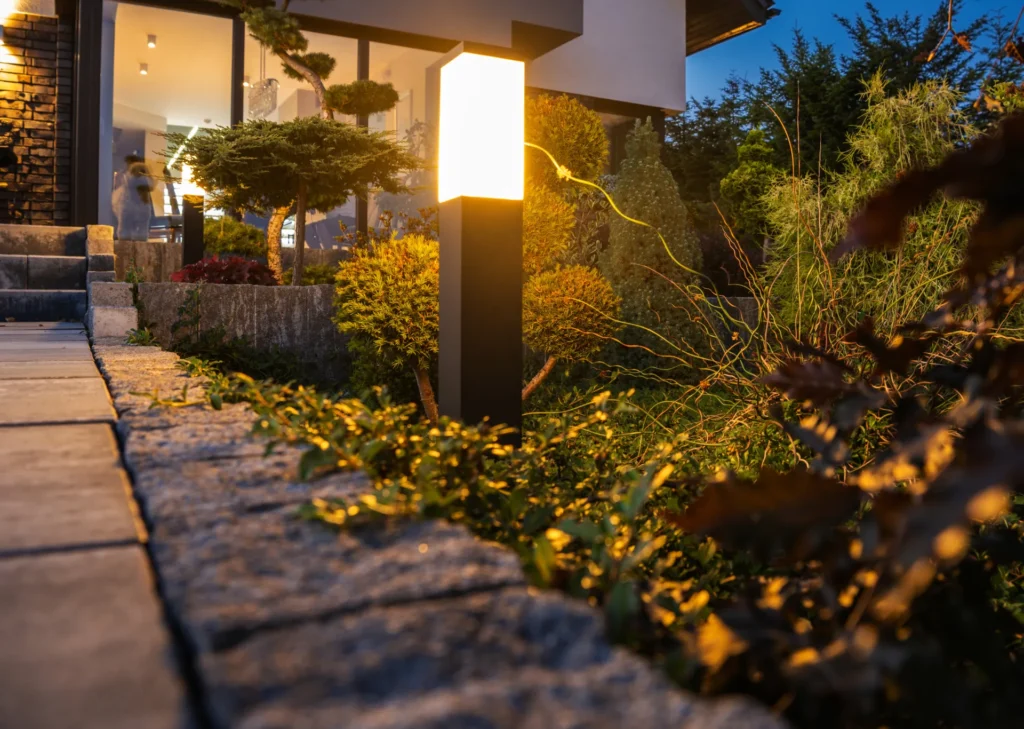
A well-lit and temperature-controlled outdoor space ensures that you can continue enjoying your backyard well after the sun goes down. Installing the right lighting and heating solutions enhances both the ambiance and functionality of your space.
Lighting Ideas for a Magical Outdoor Atmosphere:
- LED Landscape Lighting: Highlights pathways, gardens, and key outdoor features.
- String Lights & Lanterns: Adds a warm, cozy glow perfect for evening gatherings.
- Recessed & Wall-Mounted Lights: Provides soft illumination without harsh glare.
Outdoor Heating Options for Year-Round Comfort:
- Patio Heaters: Freestanding or wall-mounted options provide consistent warmth.
- Fire Tables: Dual-purpose furniture that offers both heat and a stylish focal point.
- Infrared Heaters: Energy-efficient and designed to warm people, not the air.
By integrating these heating and lighting features, your outdoor space becomes a comfortable retreat, no matter the season.
A well-designed outdoor living area enhances the home’s usability while increasing property value.
5. Smart Landscaping Technology for Efficiency and Convenience
Technology is becoming more integrated into landscaping, making maintenance easier and more efficient. In 2025, expect to see more homeowners using smart landscaping tools to automate and optimize outdoor care.
Popular Smart Landscaping Innovations:
- Smart Irrigation Systems: Weather-based irrigation controllers adjust watering schedules based on real-time weather conditions, preventing overwatering.
- Robot Lawn Mowers: These automated mowers keep lawns trimmed with minimal effort.
- Solar-Powered Landscape Lighting: Uses renewable energy to illuminate pathways, gardens, and patios.
- Outdoor Wi-Fi & Smart Speakers: Allows for seamless integration of entertainment systems in outdoor spaces.
By adopting smart landscaping technology, homeowners can reduce manual labor, save water, and improve the efficiency of their outdoor spaces.
Local Landscape Trends in Warrenton, Oregon
The landscaping industry in Oregon is seeing significant growth, with homeowners increasingly prioritizing sustainable and low-maintenance designs. Given Warrenton’s coastal climate, there’s a strong focus on:
- Stormwater management solutions like rain gardens and permeable paving.
- Wind-resistant and salt-tolerant plants to combat harsh coastal conditions.
- Durable hardscaping materials that withstand moisture and erosion.
Final Thoughts
The landscape design trends of 2025 emphasize sustainability, resilience, and functionality. For homeowners in Warrenton, Oregon, embracing these trends means creating outdoor spaces that thrive in the coastal environment while being environmentally responsible.
Adding native plants, durable hardscaping, sustainable landscaping techniques, outdoor living spaces, and smart technology, you can enhance your home’s beauty, increase its value, and enjoy a low-maintenance yard for years to come.
If you’re ready to upgrade your landscape with these cutting-edge trends, consider working with a professional landscaper who specializes in coastal Oregon environments. A well-designed landscape can transform your property into a sustainable, weather-resistant, and beautiful outdoor retreat!


